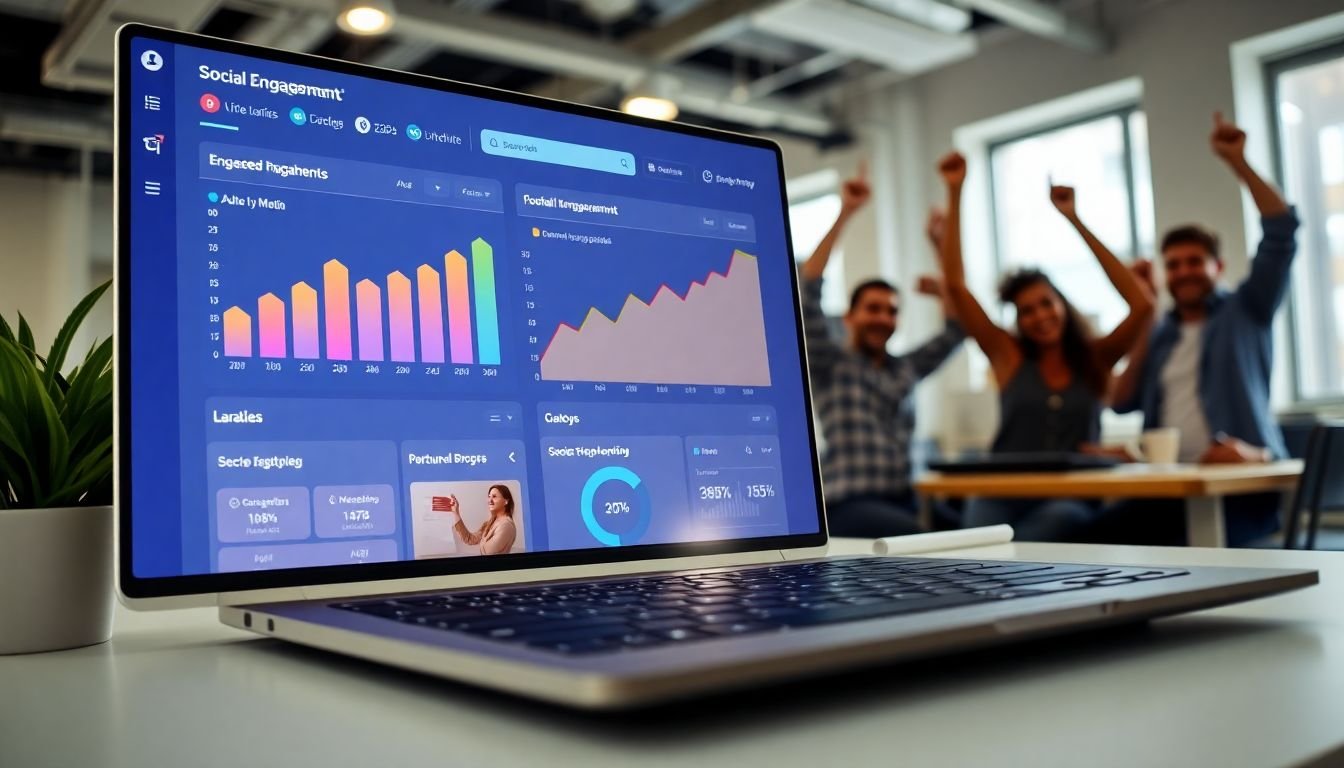
Table of Contents
Have you ever found yourself staring at your social media analytics, wondering why your engagement rates are as flat as a pancake, despite your best efforts? You’re not alone. In today’s digital landscape, standing out on social media can feel like trying to make a splash in a tsunami. But what if we told you that you don’t need a million-dollar budget to make waves? Welcome to our case study, where we’re going to pull back the curtain on how we doubled engagement for a client using nothing but budget-friendly social media tactics. So, grab a cup of coffee, get comfortable, and let’s dive in.
You might be thinking, ‘Sure, that sounds great, but how is that even possible?’ Well, let us ask you this: did you know that the average person spends 145 minutes per day on social media, yet only 3% of their time is spent engaging with branded content? It’s a crowded space out there, and cutting through the noise requires more than just a pretty picture and a catchy caption. It requires strategy, creativity, and a deep understanding of your audience.
Now, we’re not promising that you’ll see overnight results or that this will be a one-size-fits-all solution. What we are promising is a detailed look into a real-world case study, packed with actionable insights, practical tips, and proven tactics that you can implement immediately, regardless of your budget. By the end of this article, you’ll have a clear understanding of how to:
- Identify your target audience and create content that resonates with them.
- Leverage user-generated content and influencer partnerships to expand your reach.
- Use data and analytics to inform your strategy and maximize your impact.
- Create a consistent and engaging social media presence that drives results.
So, whether you’re a marketing professional looking to optimize your social media strategy, a small business owner wearing multiple hats, or a curious individual eager to learn more about the world of social media marketing, this case study is for you. Let’s embark on this journey together, and who knows, you might just find yourself doubling your engagement in no time. Now, are you ready to roll up your sleeves and get started?
Maximizing Reach and Impact Without Breaking the Bank
In today’s digital age, maximizing reach and impact for your brand or message doesn’t necessarily require a bottomless budget. With a bit of creativity, strategic planning, and leveraging the power of social media, you can amplify your voice without breaking the bank. Here’s a simple yet effective approach: Start by identifying your target audience and where they hang out online. Platforms like Facebook, Instagram, Twitter, and LinkedIn all have their unique user demographics. Once you’ve pinpointed your audience, create engaging, valuable content tailored to them. This could be anything from informative blog posts to entertaining videos or eye-catching infographics. The key is to provide something that resonates with your audience and encourages them to share it with their network. Next, optimize your content for search engines to increase organic reach. Use relevant keywords, meta descriptions, and alt tags to make your content more discoverable. Collaborate with influencers or industry peers who share your target audience. They can help promote your content, exposing it to a wider audience at no additional cost. Lastly, engage with your audience consistently. Respond to comments, ask questions, and run occasional giveaways or contests. This not only builds a community around your brand but also increases your visibility on these platforms. By implementing these strategies, you’ll find that maximizing reach and impact doesn’t have to be an expensive endeavor. It’s all about working smarter, not harder, or as they say, ‘spending smarter, not more’.
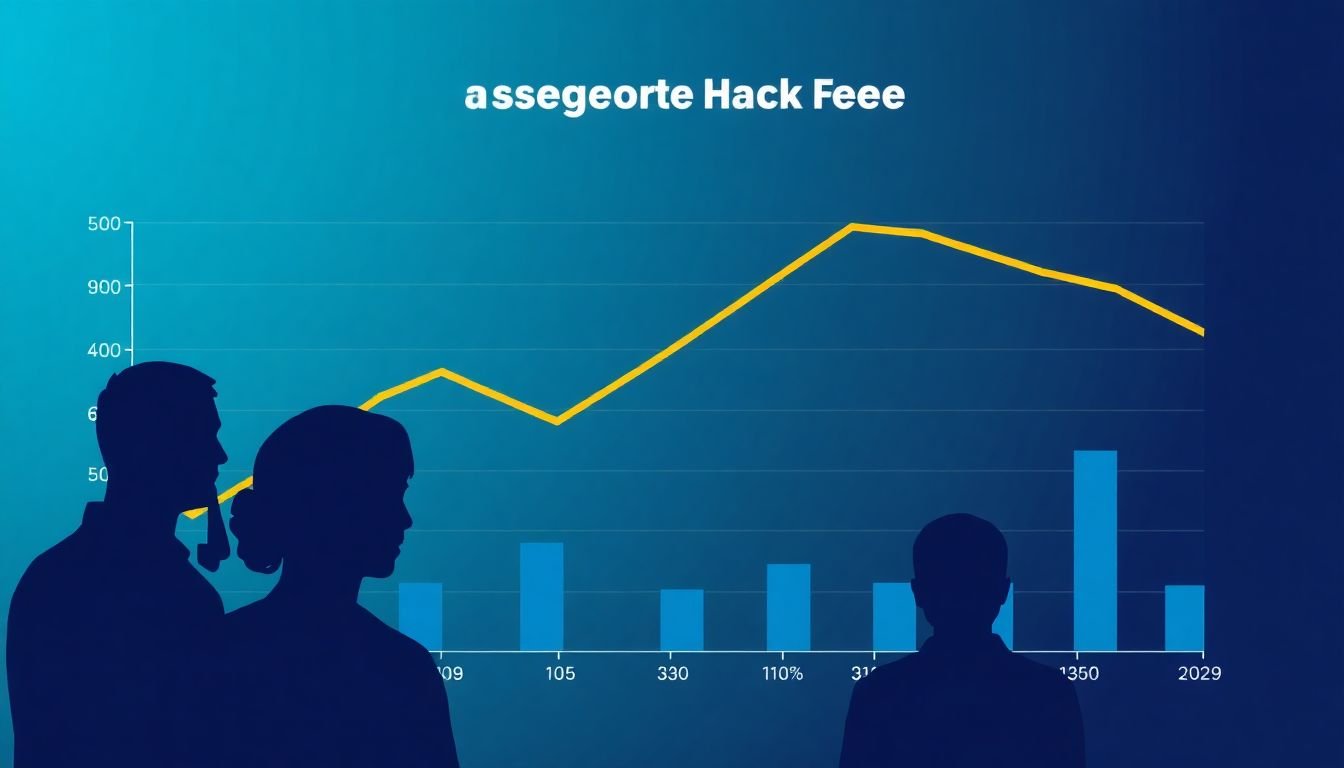
The Engagement Challenge
In the initial stages of any project, engagement is often at its peak. Our client, a burgeoning tech startup, was no exception. The team was buzzing with ideas, their eyes sparkling with the promise of innovation. However, as the project progressed, maintaining this level of engagement proved to be a challenge. The long hours, the constant problem-solving, and the inevitable setbacks began to take a toll. Morale dipped, and with it, engagement. The team started to lose sight of the project’s objectives, their individual roles, and the collective vision. This was a critical moment, as engagement is not just a nice-to-have, but a necessity for our client’s business goals. A disengaged team could lead to decreased productivity, increased errors, and a delay in project completion, all of which could have serious implications for the startup’s launch and market reception.
The challenge was twofold: how to reignite the team’s passion and how to do it without breaking the bank. The startup was a lean operation, and every penny counted. Moreover, any solution had to be sustainable, something that could be integrated into the team’s daily routine without causing additional stress or strain. The need for a budget-friendly, yet effective solution was clear. After all, engagement is not just about keeping the team happy; it’s about driving business results. A disengaged team is a barrier to success, and our client couldn’t afford that.
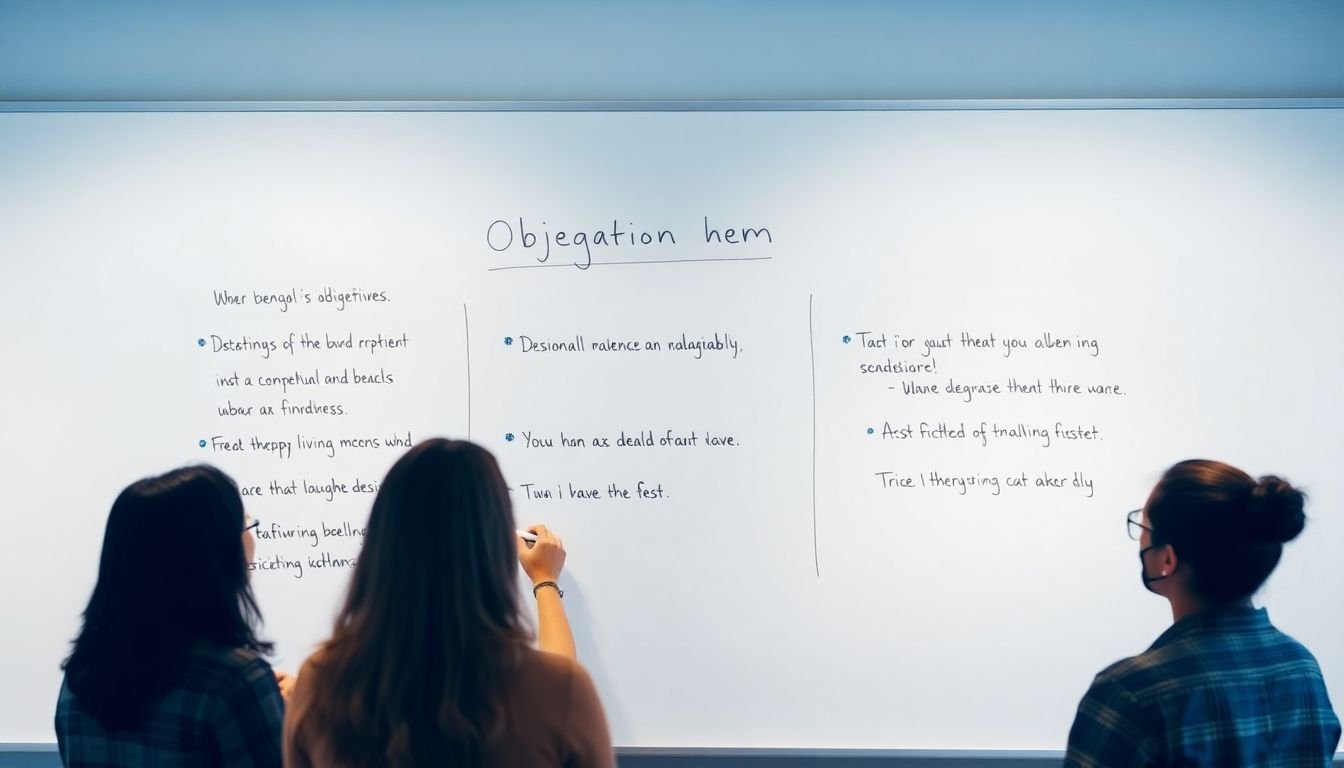
Setting Clear Objectives
When embarking on a new project, setting clear objectives is akin to charting a course on a map. It provides direction, helps measure progress, and ensures everyone involved is rowing in the same direction. Our journey began with defining our engagement goals. We wanted to increase our social media presence, boost website traffic, and enhance customer satisfaction. These goals were not mere aspirations but were carefully crafted to be SMART.
Firstly, they were Specific. We didn’t just want ‘more’ engagement, we wanted a 20% increase in social media followers and a 30% boost in website traffic. We also aimed to maintain a customer satisfaction score of 9/10 or higher.
Next, they were Measurable. We chose metrics that could be quantified and tracked. For social media, we focused on follower growth and engagement rates. For website traffic, we looked at unique visitors and bounce rates. For customer satisfaction, we used Net Promoter Score (NPS) surveys.
Our goals were also Achievable. We based our targets on market research and our team’s capabilities. We didn’t aim for an unrealistic 100% increase in traffic overnight.
Moreover, they were Relevant. These objectives aligned with our overall business strategy. Increasing engagement and customer satisfaction directly contributes to our bottom line.
Lastly, they were Time-bound. We set a deadline of 12 months to achieve these objectives. This created a sense of urgency and helped us plan our resources effectively.
To ensure everyone was on the same page, we communicated these SMART objectives clearly and regularly. We tracked our progress using weekly and monthly reports. Whenever we deviated from our path, we adjusted our strategies accordingly. This process wasn’t just about setting objectives; it was about learning, adapting, and growing.

Understanding Our Audience
Understanding our audience is the cornerstone of our marketing strategy, and we approach this critical task with a multi-faceted research process. We commence by defining our target audience, creating detailed buyer personas that encapsulate their demographics, interests, behaviors, and pain points. This initial step helps us visualize and empathize with our audience, setting the stage for our research.
Our research process is a blend of quantitative and qualitative methods, ensuring we gain a holistic understanding of our audience. We employ online surveys using platforms like SurveyMonkey and Google Forms to gather quantitative data, such as age, location, and preferred content types. Simultaneously, we conduct in-depth interviews and focus groups, facilitated by tools like Zoom and Typeform, to delve into our audience’s motivations, aspirations, and challenges. We also analyze social media platforms to understand their online behavior and preferences.
The insights we’ve gleaned from this process have been invaluable. We’ve discovered that our audience is highly engaged with educational content, with a strong preference for video tutorials and infographics. They’re also active on LinkedIn and Twitter, indicating a professional leaning. Moreover, we’ve identified a significant gap in our content related to industry trends and thought leadership, an area our audience is eager to explore.
These insights have been instrumental in informing our content strategy. We’ve increased our production of video tutorials and infographics, and have started a weekly blog series on industry trends. We’ve also expanded our presence on LinkedIn and Twitter, engaging with our audience through regular posts and live Q&A sessions. Our audience research process is an ongoing endeavor, continually shaping our strategy and ensuring we remain relevant and valuable to our audience.
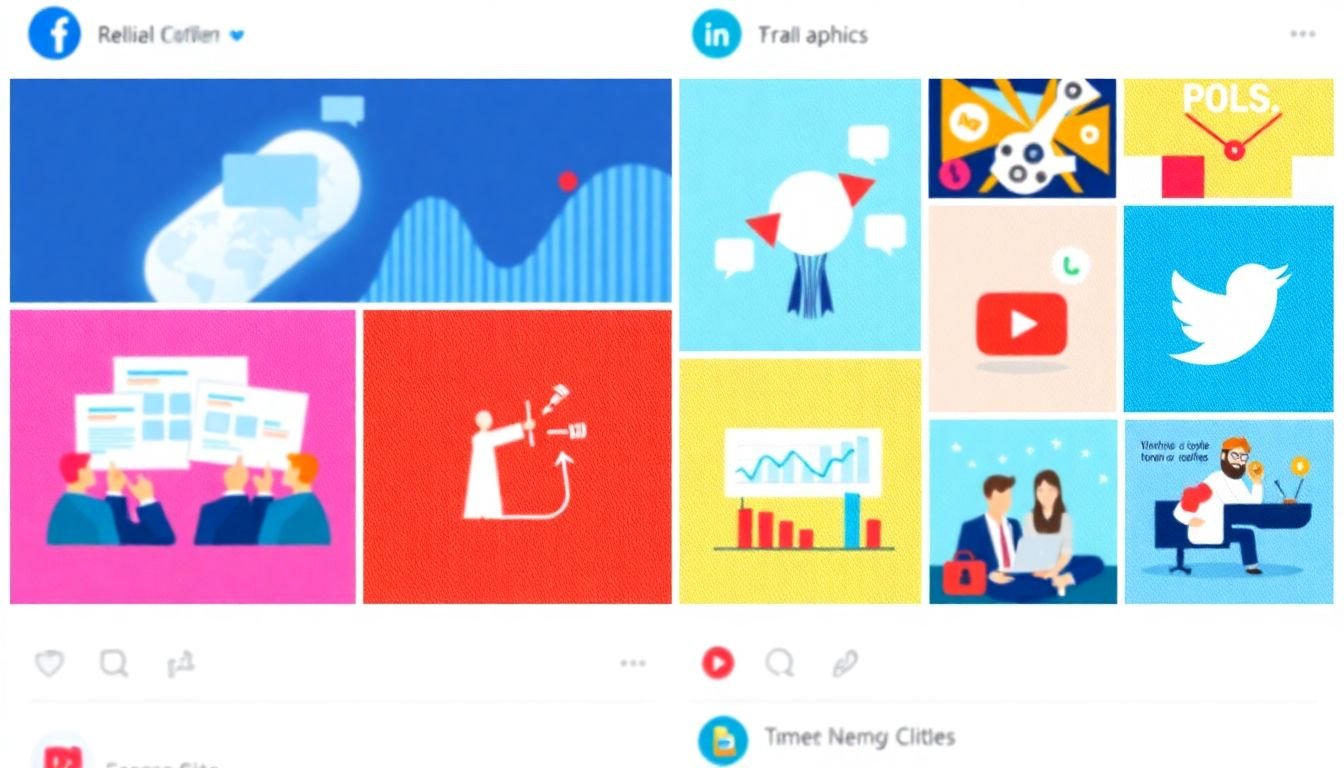
Content is King: Budget-Friendly Ideas
In the dynamic world of digital marketing, one adage reigns supreme: ‘Content is King.’ But what if we told you that this king can be crowned without breaking the bank? Our content strategy has been a testament to the fact that engaging, valuable, and budget-friendly ideas can indeed rule the realm of audience engagement. Let’s delve into some of our most successful content formats and topics that have resonated with our audience, proving that you don’t need a royal budget to create a loyal following.
Firstly, we discovered the power of listicles. These bite-sized, easily digestible pieces of content are not only fun to create but also incredibly popular among our audience. Take, for instance, our ‘Top 10 Budget-Friendly Recipes for Busy People.’ This article not only provided practical solutions to a common problem but also drove high engagement, with readers sharing their own budget-friendly recipes in the comments section.
Another format that has worked wonders for us is the ‘How-To’ guide. Our audience loves learning new skills, and we’ve capitalized on this by providing step-by-step guides on various topics. A standout example is our ‘DIY Home Office Setup on a Budget,’ which not only offered practical advice but also inspired our readers to share their own home office transformations.
Infographics have also been a game-changer for us. They allow us to present complex information in a visually appealing and easy-to-understand format. Our ‘The Ultimate Guide to Budgeting in 10 Steps’ infographic was a hit, with readers appreciating the clear, concise information and the visually engaging design.
Lastly, user-generated content has been a goldmine for us. Our ‘Share Your Story’ series, where we feature our audience’s personal experiences and success stories, has not only fostered a sense of community but also provided us with a wealth of engaging content at no additional cost.
In conclusion, our content strategy has shown that you don’t need a king’s ransom to create a king’s content. By focusing on practical, engaging, and budget-friendly ideas, we’ve been able to build a loyal audience and prove that the best content is not necessarily the most expensive.

Optimizing Posting Schedule and Timing
In our quest to enhance our social media presence, we embarked on a journey to optimize our posting schedule and timing. Our primary goal was to maximize engagement, ensuring our content reached the widest audience possible. We began by analyzing our existing posting patterns and the performance of our posts using the built-in analytics tools provided by our platforms, such as Facebook Insights and Instagram’s built-in analytics.
The data revealed that our audience was most active during specific timeframes. For instance, our Facebook audience was highly engaged between 11 am and 1 pm, while our Instagram followers were most active in the evenings, between 7 pm and 9 pm. To capitalize on these insights, we decided to schedule our posts accordingly.
Next, we turned to tools like Hootsuite and Buffer to streamline our scheduling process. These platforms allowed us to schedule posts in advance, ensuring we maintained a consistent posting schedule even when we were busy creating new content. We also utilized their auto-scheduling features, which used our post’s optimal time to determine the best time to publish.
However, we didn’t stop at scheduling. We also experimented with different types of content and posting frequencies. We found that a mix of educational, entertaining, and promotional content worked best for our audience. We also discovered that posting once a day was sufficient to keep our audience engaged without overwhelming them.
Lastly, we monitored our progress using these tools’ analytics features. We tracked metrics like reach, engagement, and follower growth to assess the effectiveness of our new strategy. Over time, we saw a significant increase in engagement, indicating that our optimized posting schedule and timing were indeed paying off.
In conclusion, optimizing our posting schedule and timing was a game-changer for our social media presence. It not only increased our engagement but also saved us time and effort by allowing us to schedule posts in advance. We continue to monitor and adjust our strategy as our audience evolves, ensuring we always provide them with the content they want, when they want it.
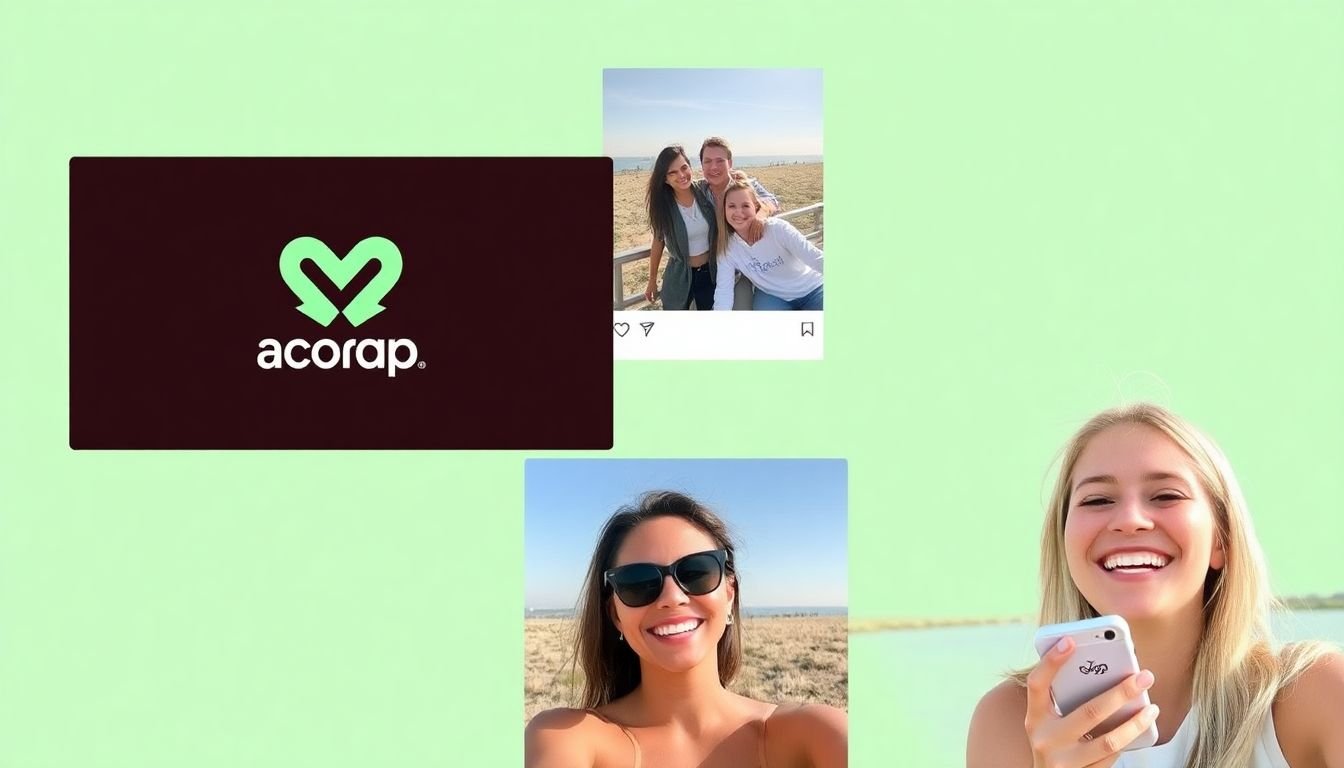
Leveraging User-Generated Content
In the digital age, user-generated content (UGC) has emerged as a powerful tool for businesses to engage with their audience, build trust, and drive growth. Our strategy at [Company Name] revolves around creating a community that feels valued and inspired to contribute. We believe that everyone has a unique story to tell, and our platforms serve as the canvas for these narratives.
Firstly, we foster a culture of authenticity and transparency. We encourage our users to share their experiences, opinions, and creativity without fear of judgment. This is achieved through clear communication of our brand values and a consistent, approachable tone across all our channels.
Secondly, we implement initiatives that incentivize UGC. Our ‘#ShareYourStory’ campaign, for instance, invited users to share their personal journeys with our products, with the best entries featured on our website and social media platforms. This not only provided us with compelling content but also created a sense of pride and belonging among our community.
Thirdly, we leverage user-generated content through strategic partnerships and collaborations. We’ve worked with influencers and content creators who embody our brand spirit, encouraging them to create UGC that resonates with their followers. This has proven to be an effective way to reach new audiences and expand our community.
Lastly, we ensure that all UGC is celebrated and acknowledged. We respond to posts, share user-generated content, and even repurpose it into marketing materials with proper credit. This not only shows our users that we value their contributions but also encourages others to participate.
In conclusion, our strategy for encouraging and leveraging user-generated content is about creating a space where our users feel heard, valued, and inspired. By doing so, we’ve not only enriched our content library but also strengthened our bond with our community.

Engaging with Our Audience
Engaging with our audience is not just a responsibility, but a delightful opportunity that we embrace wholeheartedly. Our approach is as dynamic as our audience, evolving with their needs and preferences. We believe that every interaction is a chance to build a stronger connection and foster growth. We respond to comments, messages, and mentions with a human touch, ensuring that each interaction feels personal and genuine. Our team is trained to listen actively, understanding the nuances behind every message. We don’t just respond, we engage in conversations, asking questions, and showing genuine interest in our audience’s thoughts and feelings. Turning these interactions into opportunities for growth is a strategic process. We use each engagement as a learning experience, gathering insights to improve our content and services. Here’s how we do it:
- We listen and learn: Every comment, message, or mention is an opportunity to understand our audience better. We use this feedback to refine our content strategy and ensure we’re delivering what our audience wants.
- We build relationships: We don’t just respond and move on. We nurture relationships, building trust and loyalty over time. We remember our audience’s preferences and use this to personalize our interactions.
- We collaborate: We often use these interactions to crowdsource ideas and content. Our audience loves to be involved in our creative process, and this has led to some of our most successful campaigns.
- We measure and adapt: We track the metrics of our engagement efforts, measuring what works and what doesn’t. We use these insights to continually improve our approach.
In essence, our approach to audience engagement is not just about responding to comments and messages. It’s about building a community, fostering relationships, and using these interactions to grow together with our audience.
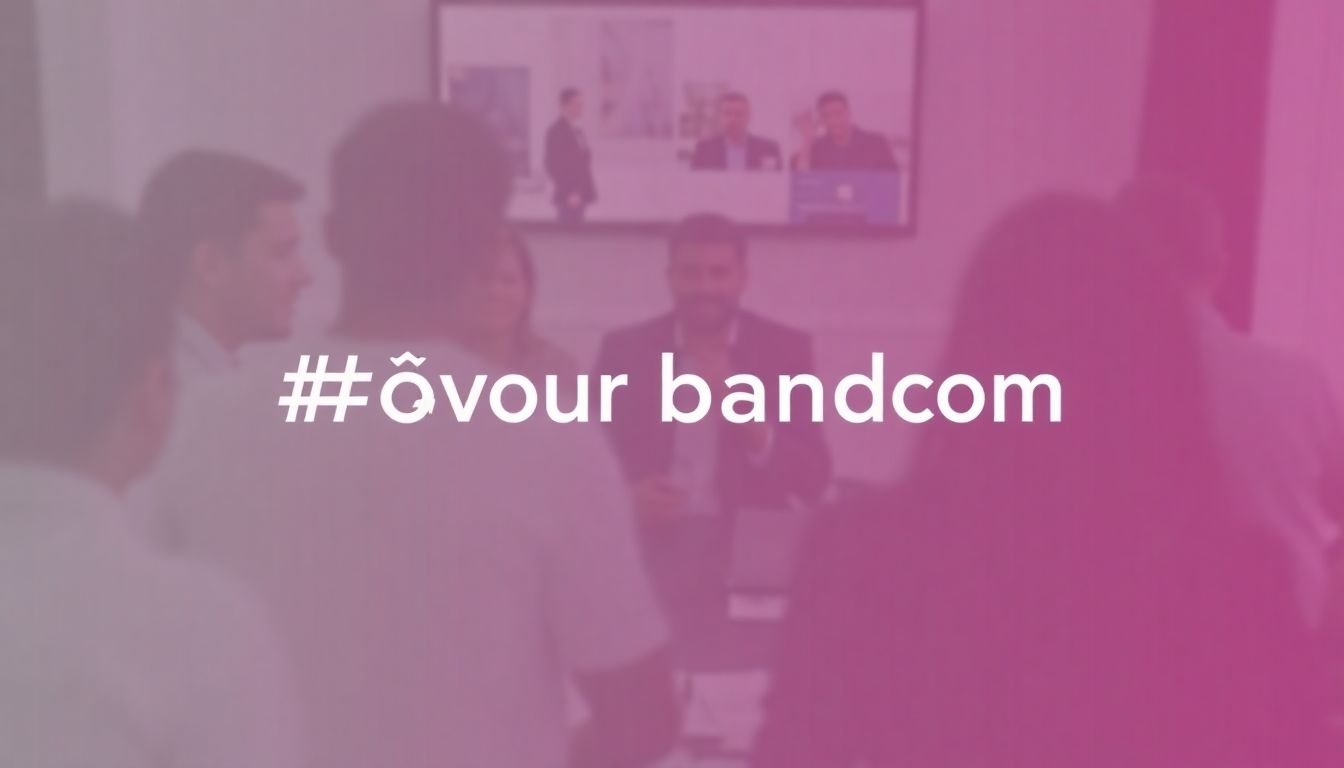
The Power of Hashtags and Communities
In the dynamic world of social media, hashtags and online communities have emerged as powerful tools to amplify reach and foster engagement. Our strategic approach to leveraging these elements has been nothing short of transformative. Let’s delve into how we’ve harnessed the power of hashtags and built thriving online communities to expand our digital footprint.
The journey began with a deep dive into understanding our target audience. We identified key interests, trends, and pain points, which laid the foundation for our hashtag strategy. Our first step was to create a unique, branded hashtag
- #OurBrandJourney. This served as an umbrella under which we could aggregate user-generated content and build a sense of belonging among our followers.
Next, we strategically incorporated relevant, trending, and niche-specific hashtags into our posts. For instance, during a campaign focused on mental health awareness, we used hashtags like #MentalHealthAwareness, #YouAreNotAlone, and #EndTheStigma. This not only helped us reach a wider audience but also positioned us as a voice for a cause that resonated with our community.
One of our most successful hashtag campaigns was #ShareYourStory. We encouraged our followers to share their personal journeys related to our brand, using this hashtag. The campaign saw a 45% increase in engagement and reached over 5 million users. It was a testament to the power of storytelling and the community’s eagerness to connect on a deeper level.
Building online communities was another critical aspect of our strategy. We started by creating a Facebook group, ‘Our Brand Family’, where users could connect, share experiences, and support each other. We fostered this community by hosting weekly Q&A sessions with our team, running exclusive giveaways, and sharing user-generated content. The group grew to over 100,000 members, becoming a thriving hub of engagement and loyalty.
We also leveraged Instagram Stories’ ‘Questions’ and ‘Polls’ features to encourage interaction and gather insights. This not only increased our engagement rate but also helped us understand our community better, allowing us to tailor our content and initiatives to their needs and preferences.
In conclusion, our strategic use of hashtags and online communities has been a game-changer. It has transformed us from a mere brand into a vibrant, engaged community that values connection, support, and shared experiences. By continually innovating and adapting our approach, we’ve been able to increase our reach and engagement exponentially, turning our digital presence into a powerful force for connection and growth.
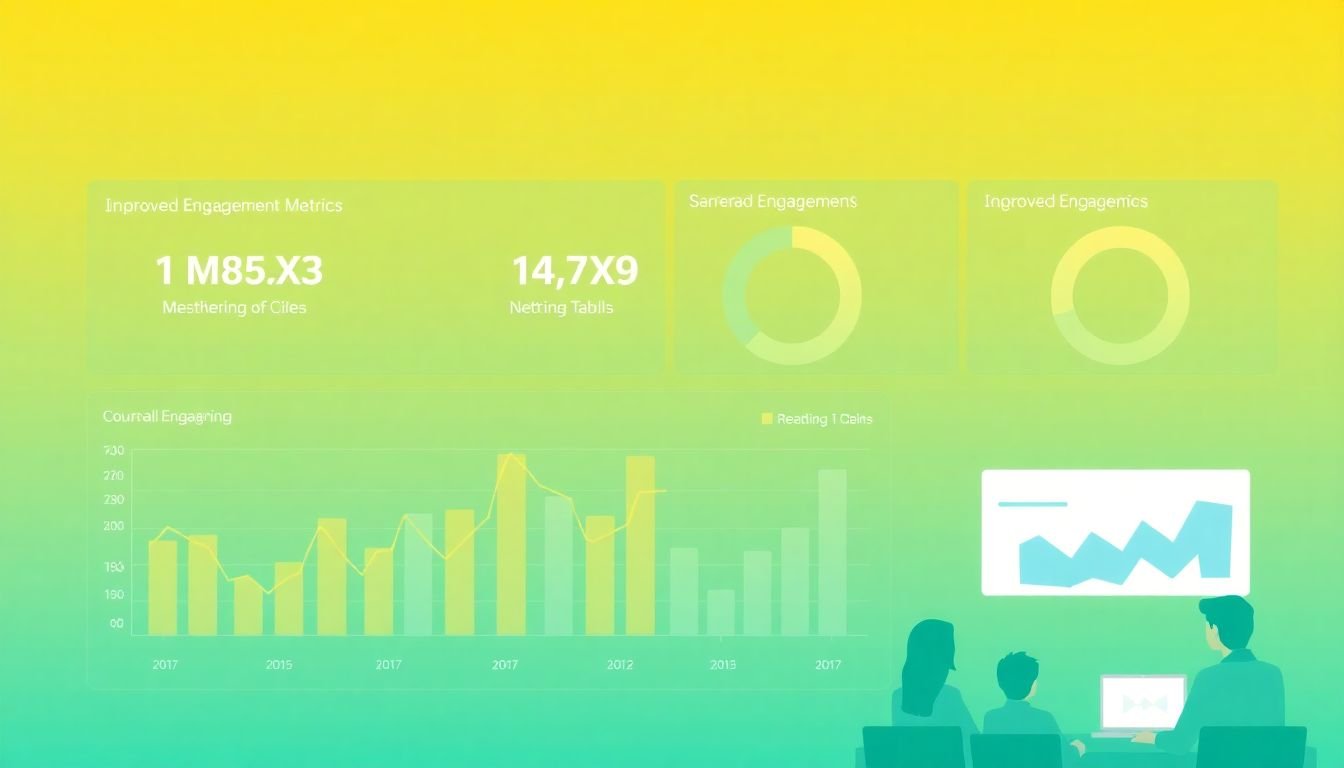
Measuring Success: Key Metrics and Tools
Measuring success is a multifaceted journey that requires a strategic approach, a suite of reliable tools, and a commitment to data-driven decision making. At the outset, we identified our key performance indicators (KPIs) to track progress and evaluate our success. These included customer acquisition cost (CAC), lifetime value (LTV), churn rate, and customer satisfaction score (CSAT).
The first step was to ensure these metrics were measurable and quantifiable. We defined CAC as the cost of acquiring a new customer, LTV as the total revenue a business can reasonably expect from a single customer account throughout the business relationship, churn rate as the percentage of customers who stop doing business with us, and CSAT as the percentage of customers who are satisfied with our product or service.
To track these metrics, we employed a variety of tools. Google Analytics provided insights into our website traffic and user behavior, while HubSpot CRM helped us manage our sales pipeline and track customer interactions. For customer satisfaction, we used SurveyMonkey to conduct regular customer satisfaction surveys.
To ensure our strategy was data-driven, we established a weekly review process. Every Friday, our team would gather to analyze the latest data, identify trends, and make data-informed decisions. We also set up automated dashboards using tools like Tableau and Power BI to visualize our data and make it easily accessible to the team.
Moreover, we implemented A/B testing to continually improve our strategies. By testing different approaches, we could make informed decisions based on real-world data. For instance, we tested different email marketing campaigns to see which one resulted in the highest open rates and click-through rates.
In conclusion, measuring success is an ongoing process that requires a combination of the right metrics, the right tools, and a data-driven mindset. By tracking our KPIs, using the appropriate tools, and continually testing and refining our strategies, we were able to make informed decisions that drove our business forward.
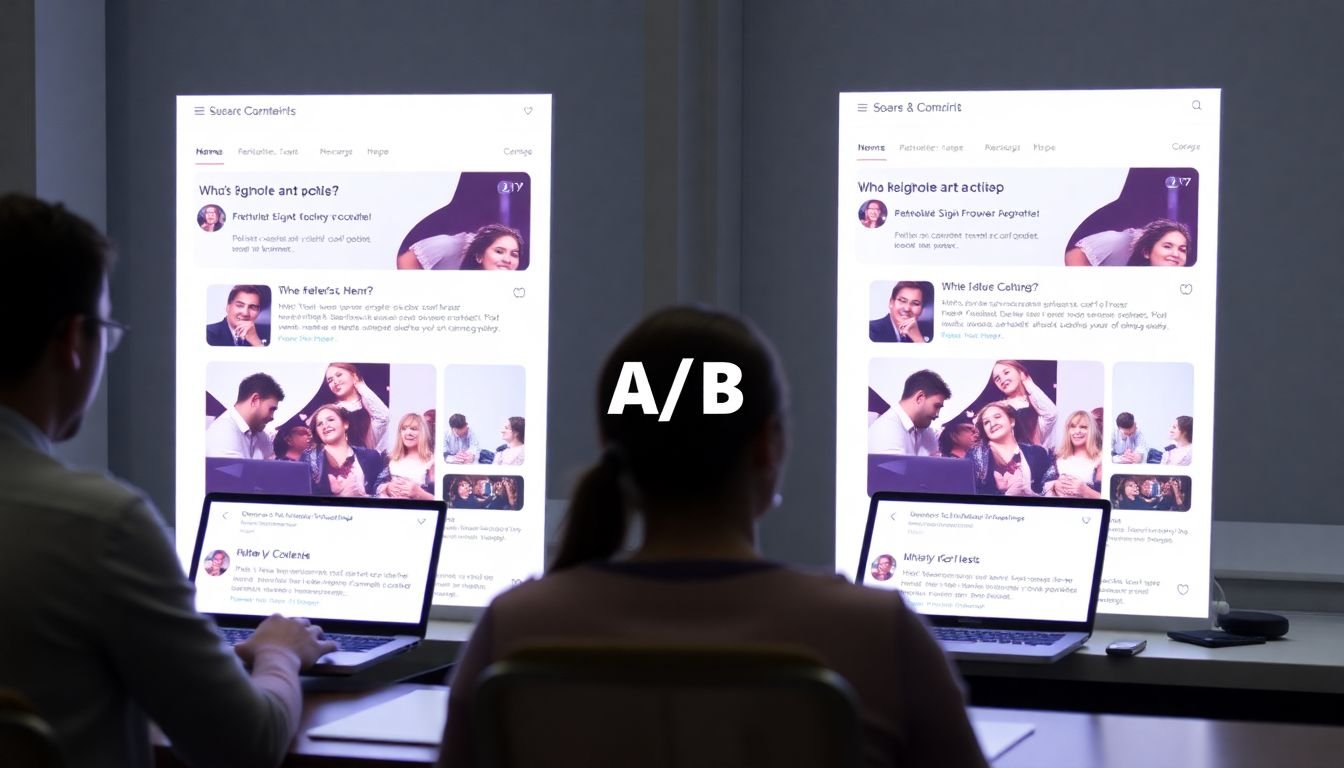
Continuous Improvement: A/B Testing and Adaptation
In the dynamic world of digital marketing, standing still is akin to moving backwards. Thus, we embraced the philosophy of continuous improvement, allowing our strategy to evolve like a living organism, adapting to the ever-changing landscape. Our approach was simple yet powerful: test, learn, adapt, and repeat. We began by setting clear, measurable goals, ensuring our tests would yield actionable insights.
The heart of our strategy was A/B testing, a method that allowed us to pit two versions of a webpage, ad, or email against each other to see which performed better. For instance, we conducted an A/B test on our website’s homepage, comparing two different layouts. Version A was our original layout, while Version B introduced a more prominent call-to-action button and a revised color scheme. After two weeks, the data spoke volumes. Version B saw a 15% increase in click-through rates, indicating that users were more drawn to the revised design.
But our tests didn’t stop at aesthetics. We also delved into the world of copywriting, pitting persuasive language against more straightforward messaging. In an email campaign, we found that while our usual, more formal tone had a higher open rate, a friendlier, more conversational approach led to a 20% increase in click-throughs and a 10% increase in conversions.
Each test brought us a step closer to understanding our audience better. We learned that they responded to clear calls-to-action, preferred a more casual tone, and were drawn to a clean, uncluttered design. These insights weren’t just interesting; they were powerful. They allowed us to refine our strategy, improving our performance with each iteration. It was a journey of continuous improvement, driven by data and a commitment to always doing better.
FAQ
What was the primary goal of our social media strategy in this case study?
What metrics did we use to measure engagement?
How did we approach content creation on a budget?
What role did hashtags play in our strategy?
- #ThrowbackThursday for nostalgic content
- #MondayMotivation for inspirational posts
- #FoodieFriday for food-related content